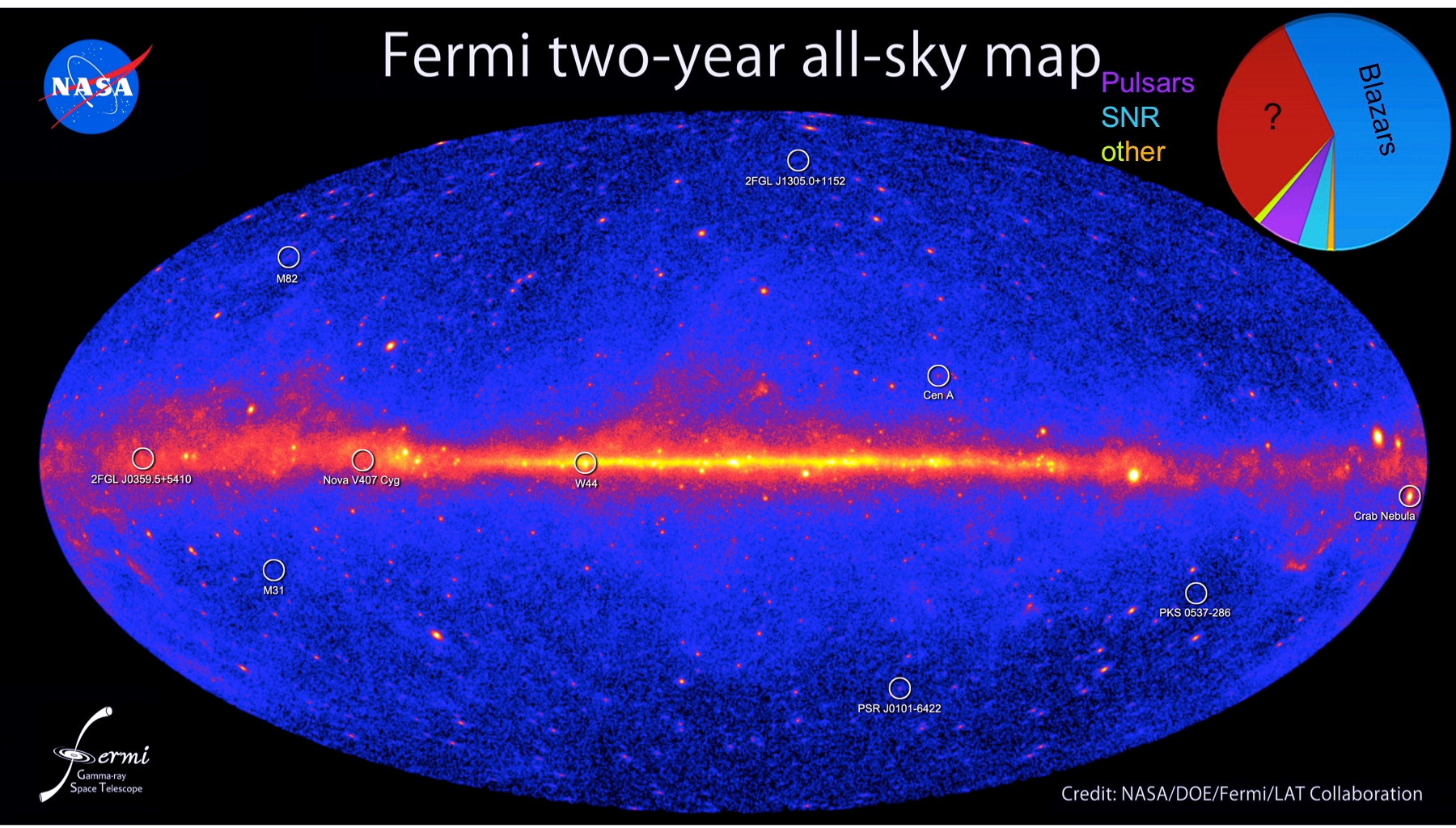
 Credit: NASA/DOE/Fermi LAT Collaboration; Inset: NASA's Goddard Space Flight Center
Credit: NASA/DOE/Fermi LAT Collaboration; Inset: NASA's Goddard Space Flight Center
A Deeper Universe
The Fermi Gamma-Ray Space Telescope has been scanning the entire Universe every 3 hours ever since launch. The gamma-ray map that Fermi accumulates grows more and more sensitive with time as more and more gamma-ray photons are added to it. Each year, the Fermi team (and other scientists) take a detailed look at this map to see what's changed, what new sources have been detected, and which strong sources have changed over this time interval. Earlier this year, the Fermi team's detailed analysis of 2 years of gamma-ray data obtained with Fermi's Large Area Telescope was published as the Fermi 2-year source catalog. The 2-year all-sky map is shown above, along with an inset showing the distribution of the types of sources seen by Fermi so far. Most of the sources seen by Fermi are blazars, types of active galaxies which are oriented in space so that the jet emanating from their central, supermassive black hole is pointing directly at us. Other identified sources include pulsars and supernova remnants, and things like globular clusters, high mass X-ray binary stars, normal galaxies and other (non-blazar) active galaxies, and a star or two. Interestingly, many of the sources detected by Fermi are as yet unidentified; what can they be?
Published: September 12, 2011
<
HEA Dictionary ● Archive
● Search HEAPOW
● Other Languages
● HEAPOW on Facebook
● Download all Images
● Education ● HEAD
>

Each week the HEASARC
brings you new, exciting and beautiful images from X-ray and Gamma ray
astronomy. Check back each week and be sure to check out the HEAPOW archive!
Page Author: Dr. Michael F. Corcoran
Last modified Monday, 26-Feb-2024 17:35:19 EST


